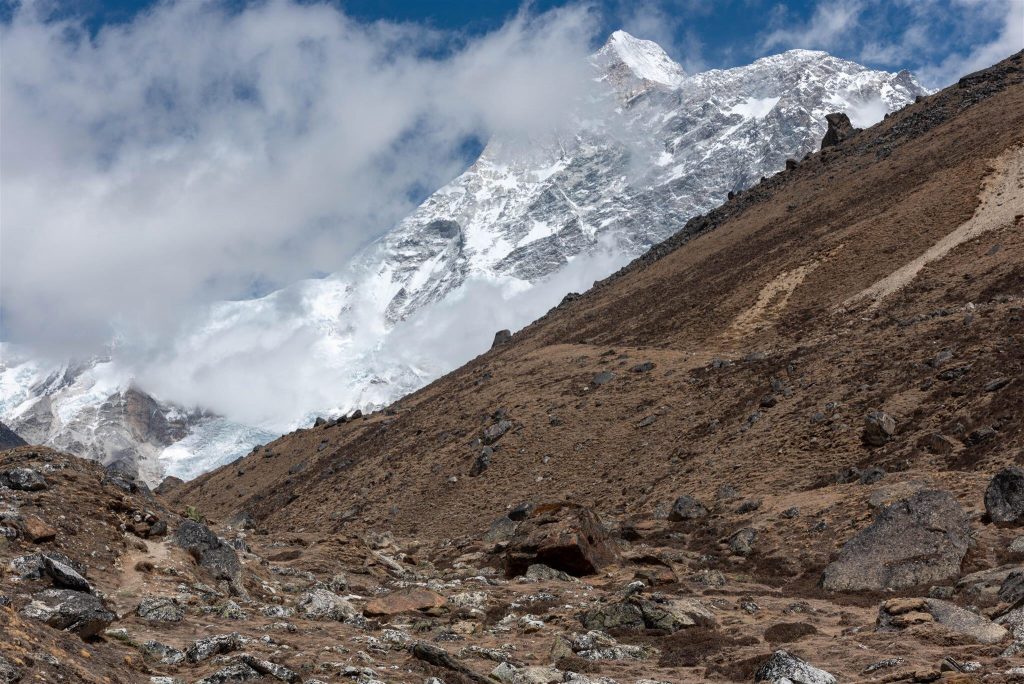This week, the Makalu Climate Climb, a 12-person ESA-sponsored science expedition, reached base camp of Mount Makalu. At 8481 m, it’s the the fifth-highest mountain on the planet.

Swedish Explorer Carina Ahlqvist prepares for her Makalu summit attempt. (C. Ahlqvist)
During the eight-day trek, scientists ascended 3250 m, documenting the locations and extent of recent surface deformations relating to natural hazards such as rock falls, landslides and glacial outburst floods. This information is particularly valuable for ESA Climate Change Initiative research fellow, Romy Schlögel, who is currently using Earth observation data to monitor how climate change is affecting Mount Makalu.
Over recent decades, changes in climate have affected the stability of natural and engineered slopes, which can lead to landslides (Gariano & Guzzetti, 2016). In particular, rock avalanches may be becoming larger because of rock-permafrost degradation.
However, little is known about the effects of climate and its variation on slope stability, landslide hazards, and the related risk.

Mount Makalu and a potentially unstable slope. (ESA)
To investigate this problem Dr Schlögel has been using synthetic aperture radar (SAR) interferometry time-series data from the Copernicus Sentinel-1 mission to detect high hazard activity and possibly, evaluate the relationships between the meteorological conditions known to trigger particular hazards.
The expedition team is logging the locations of recent mass movements and glacial outburst flood events, which in turn will help Dr Schlögel. Georeferenced photographs of source or deposit areas affected by these phenomena will also help to validate their detection by satellite data.
The expedition was led by Swedish explorer, Carina Ahlqvist. Once the team arrives at base camp, she will prepare for her attempt to be the first Scandinavian woman to climb Mount Makalu.
Meanwhile, the research team will move onto the second science objective, the Barun glacier, where they will take measurements and samples to assess the age of the moraines site by recording data as spatial information, rock strength or layers structures. More information on the methods of data collecting will be given in next week’s post.
References:
Gariano, S. L., & Guzzetti, F. (2016). Landslides in a changing climate. Earth-Science Reviews, 162, 227–252. (https://www.sciencedirect.com/science/article/pii/S0012825216302458)
Schlögel, R., Malet, J.-P., Reichenbach, P., Remaître, A., & Doubre, C. (2015). Analysis of a landslide multi-date inventory in a complex mountain landscape: The Ubaye valley case study. Natural Hazards and Earth System Sciences, 15(10). (https://www.nat-hazards-earth-syst-sci.net/15/2369/2015/nhess-15-2369-2015.pdf)








Discussion: no comments